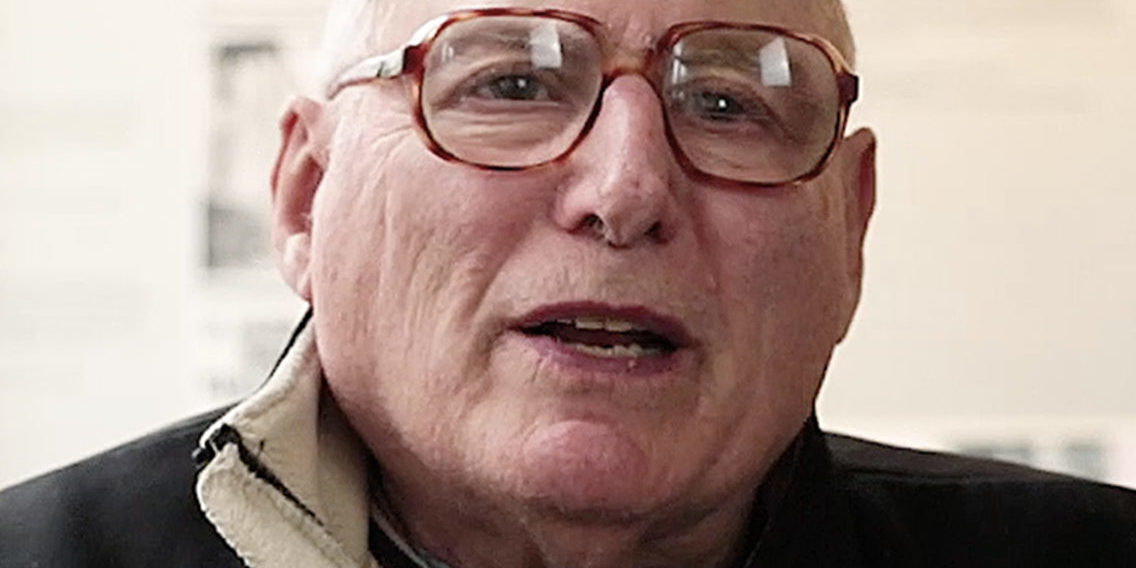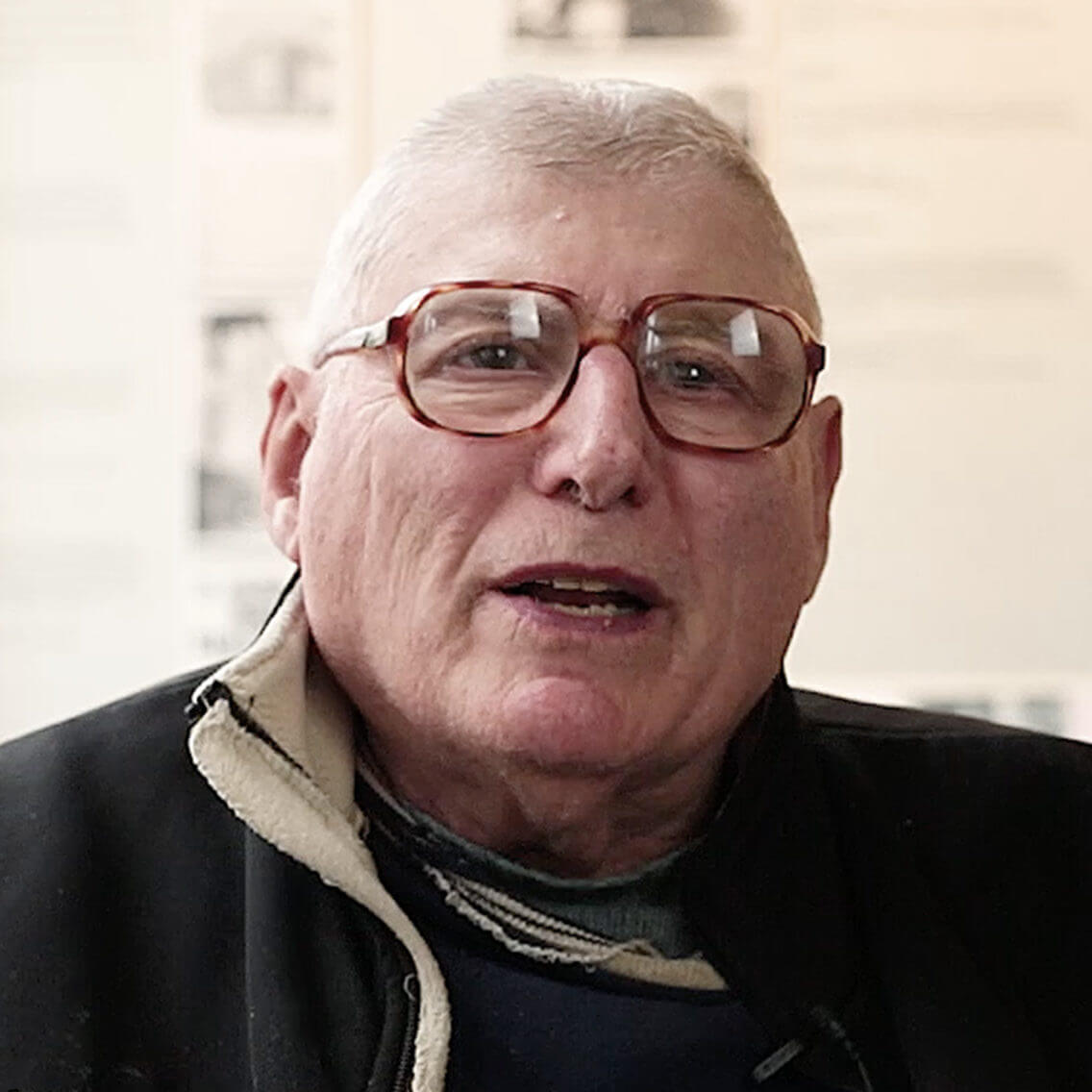Former West Ender & 15-Year Museum Volunteer Recalls Toll of Urban Renewal
Sure, you can grip the heavy iron ice tongs or study the beauty of gelatin-silver-backed photos of neighborhood street life. But if you really want to know about Boston’s old West End – vanquished and vanished at the hands of urban renewal – you need to meet Bruce Guarino.
In April 2019, Guarino turned 80 years old and celebrated his 15th year as a senior docent at The West End Museum. A descendant of Jewish-Belarusian and Italian immigrants, he is an incarnate artifact of the ethnic diversity that was a hallmark of the old neighborhood.
“It was a great place to grow up in,” said Guarino. “It was one of the most ethnically diverse areas in the entire country – 23 different ethnic groups, including African-Americans, lived together in this 50-acre parcel of land.”
He reminisces in rapid-fire detail about John the butcher, Fox’s Drug Store, and other storefronts near his childhood home at 32 Grove Street; playing stickball and punch-ball in the street; hanging out at the West End House, a social club formed by immigrant boys in 1906. He describes a community where everyone felt safe and cared for.
“Your mother or grandmother could go out in the street at 2:30 in the morning and no one would bother her,” he said. “If somebody got sick, the Polish people would bring kielbasa, and Jewish penicillin – chicken soup – from the Jewish families. They all looked out for one another.”
Sadly, Guarino is not short on details when it comes to the decimation of the West End either.
“We romanticize about this neighborhood, because we never thought we were going to lose it. We thought it was a lot of scare talk, but it wasn’t. Come 1958, around July 1958, that’s when they started to tear the neighborhood down. Bit by bit. Building by building. Street by street. Block by block,” he said. “They destroyed some 35 streets, courtyards, and cul-de-sacs. They wiped out some 700 buildings and they displaced or evicted some 7,000 people.”
Like many surviving West Enders, the emotional scars of the demolition run deep for Guarino. He remembers well the empty promises made to residents and remains suspect of the motives of those responsible for it.
“They took this neighborhood down, not because it was a slum, because it was not. They took it down because of its location. It’s near the North Station and the old Boston Garden; the Charles River; the world famous Massachusetts General Hospital; and the theater, financial, and business districts,” he said.
Also like many others, Guarino believes certain actions were taken with malicious intent.
“Years before the wrecking ball made its unwanted and unwelcome appearance here, they went around the various streets of the neighborhood and told the people, ‘Don’t bother to fix up your houses, because they may be taken over by eminent domain.’ So, people stopped…[because] they didn’t want to throw good money after bad,” Guarino said.
When the sanitation department stopped regular trash collection, that led to “piles and piles of trash” strewn throughout the neighborhood. Then, officials and developers came to take pictures of the buildings and the streets to send to City Hall, the State House, and the federal government.
“They would say, ‘Listen, pictures do not lie. We have a slum area here. Just look at the buildings. They’re in deplorable condition. They’re falling apart. Just look at the streets.”
To add insult to injury, although the thousands of displaced residents had been told they would be able to return to new and affordable housing in the neighborhood, that never came to be.
“It was all a big lie. They had absolutely no intention of having former, poor West Enders coming back here to live,” Guarino said. “They got these high-rise luxury apartments, hoping to lure back into the city the middle- and upper-income people and encourage them to spend money downtown to get Boston out of an economically depressed situation.”
Guarino’s mission for 15 years and counting has been to strengthen the legacy of the old West End by volunteering at the Museum. How that happened is truly serendipitous. On a random Saturday night in 2004, he had gone to a movie in downtown Boston. He knew that the West End Place building had been completed, and he wanted to see what it looked like. That same night, some founders of the Museum (on the ground floor of West End Place) were still onsite.
“I saw a sign that said West End Museum, and I’m pleasantly surprised, and I want to find out what’s going on here. So, I went in and reintroduced myself to some people I hadn’t seen in 50 years, and I was hooked.”
Since then, Guarino has been a fixture at the Museum, welcoming visitors and giving guided tours where he shares his personal perspective on what the former community was all about.
“The Museum… [is] unlike any other museum in this part of town or in the entire country, because it’s dedicated to documenting the history of the West End. That’s what it is: to keep the spirit alive of a neighborhood that once was and is no more.”
All of us at the Museum are eternally grateful for Guarino’s spirit and his tireless dedication. Congratulations on 15 years and happy 80th birthday, Bruce!
See a video interview with Bruce here and subscribe to the Museum’s YouTube channel.



